Most of my savvy readers have heard of the great Al Kooper, and they know he bears no relation to shock rocker Alice Cooper.
Kooper had a hand in many significant musical moments of the ’60s and ’70s. He co-wrote “This Diamond Ring,” a huge hit for Gary Lewis and the Playboys in 1963. He played the Hammond organ on Bob Dylan’s milestone 1965 anthem, “Like a Rolling Stone.” He formed Blood, Sweat & Tears and sang and played on their influential 1968 debut LP “Child is Father to the Man.” He jammed first with blues guitarist Mike Bloomfield and then with the great Stephen Stills, resulting in the landmark 1968 LP “Super Session.” He discovered Lynyrd Skynyrd in 1972 and produced their first three LPs. He produced the 1975 debut album by The Tubes. And on and on.
And in 1968, when Kooper was working as an A&R man with Columbia Records, he persuaded label head Clive Davis to release an album by a group that had already disbanded. The album was “Odessey & Oracle,” and the group was The Zombies.
In retrospect, it’s clear that Kooper was right to lobby on the group’s behalf. Although
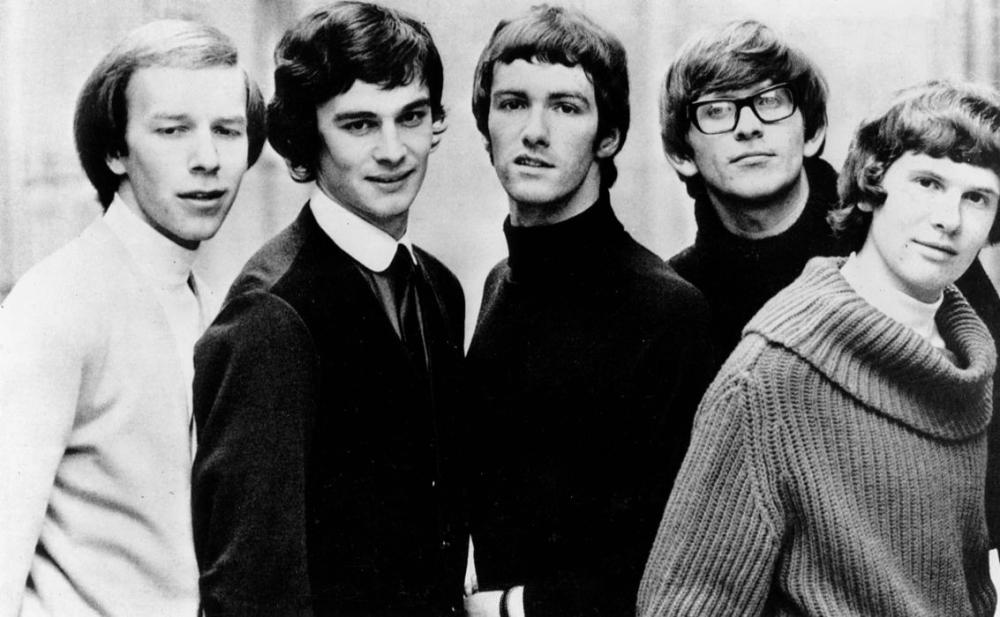
The Zombies (from left): Hugh Grundy, Colin Blunstone, Paul Atkinson, Chris White and Rod Argent
the album has never sold or charted all that well, “Odessey and Oracle” is often mentioned as one of the great overlooked masterpieces of Sixties rock, and it includes the (dare I say it?) timeless classic “Time of the Season.”
And now here we are in 2019, and The Zombies are about to be inducted into the Rock and Roll Hall of Fame.
Unlike many of the hundreds of hopeful but lame groups in England and the U.S. who came along in the wake of The Beatles’ dramatic debut of 1963-1964, The Zombies actually brought some talent to the table.
Rod Argent, Chris White and Colin Blunstone were three musically inclined students from St. Albans, a small town 20 miles north of London. They’d excelled in a boys choir and in music theory, showing promise as both singers and songwriters. In 1962, they formed a band called The Mustangs, with Blunstone on vocals, Argent on keyboards, White on bass, Paul Atkinson on guitar and Hugh Grundy on drums. Upon hearing of other groups with the same name, they decided instead to call themselves The Zombies “because we were pretty sure no one else would ever call themselves that,” reflected Argent years later.
Decca Records, who had infamously passed on The Beatles but had already signed The Rolling Stones, decided to give The Zombies a contract as well. During sessions for the group’s first LP, “Begin Here,” Argent came to producer Ken Jones with the outline of a tune he was working on based on a John Lee Hooker song called “No One Told Me.” He was encouraged to complete it, using a key favorable to the silky smooth voice of lead singer Blunstone. The result was “She’s Not There,” an enormous hit that established the band in the UK (#12) and in the U.S. (#2), where it edged out The Kinks’ “You Really Got Me” and The Stones’ “Time is On My Side” in December 1964.
(“She’s Not There” saw new life in 1977 when Santana covered it on their “Moonflower” album, and it reached #27 and #11 in the U.S. and the U.K.)
The Zombies made only two albums, both of which performed poorly on the charts, but 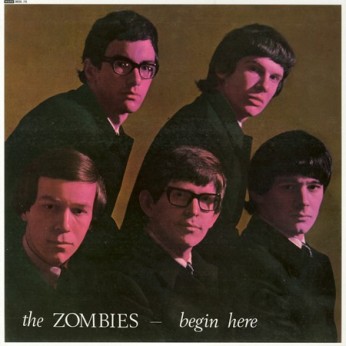 listening to them now, I find the bulk of their material refreshing and engaging. And I’m not alone in this assessment. Here’s what Critic Mark Deming, writing for AllMusic, had to say: “Given the wealth of fine original tunes that the Zombies released on various non-LP singles and EPs during this period, it’s a shame that so much of their ‘Begin Here’ album was given over to covers. It’s still a fine album, and certainly better than what most of their peers had to offer in 1965, but what could have been an achievement on a par with The Kinks’ ‘Face to Face’ or even the Beatles’ ‘Rubber Soul’ ended up being something quite good instead of an unqualified triumph.”
listening to them now, I find the bulk of their material refreshing and engaging. And I’m not alone in this assessment. Here’s what Critic Mark Deming, writing for AllMusic, had to say: “Given the wealth of fine original tunes that the Zombies released on various non-LP singles and EPs during this period, it’s a shame that so much of their ‘Begin Here’ album was given over to covers. It’s still a fine album, and certainly better than what most of their peers had to offer in 1965, but what could have been an achievement on a par with The Kinks’ ‘Face to Face’ or even the Beatles’ ‘Rubber Soul’ ended up being something quite good instead of an unqualified triumph.”
Forty and fifty years after its release, The Zombies’ song “The Way I Feel Inside” from “Begin Here” ended up on the soundtrack of director Wes Anderson’s 2004 cult favorite “The Life Aquatic” as well as in the celebrated 2016 animated film “Sing.” Also worthy of your attention are Argent originals “I Remember When I Loved Her” and “Woman” as well as killer covers of the Gershwin classic “Summertime” and The Miracles’ “You Really Got a Hold on Me,” where Blunstone’s vocals really shine.
Argent’s inventive use of a Hohner Pianet for the keyboard parts distinguished The Zombies’ jazz-inflected stylings, especially on their second big hit “Tell Her No,” another Argent original which reached #6 in April 1965 (although it stalled at #42 in England). Rock historian Maury Dean described “Tell Her No” as “a precursor to jazz fusion for the way the song moves in fits and starts, and for its polyrhythms.”
On the strength of these two big hits, The Zombies made their first visit to the States, and 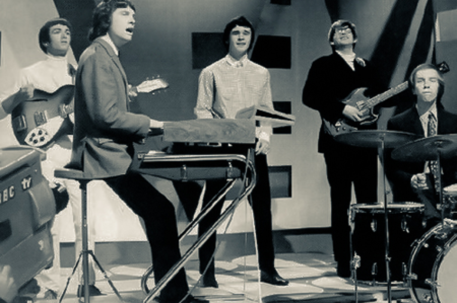 sang both songs on the first episode of the new NBC prime-time music show “Hullabaloo” in the fall of 1965, where teenage girls screamed their heads off at Blunstone’s matinee-idol good looks and mesmerizing voice.
sang both songs on the first episode of the new NBC prime-time music show “Hullabaloo” in the fall of 1965, where teenage girls screamed their heads off at Blunstone’s matinee-idol good looks and mesmerizing voice.
Not much happened for the band in 1966, but in the summer of 1967 they entered EMI’s Abbey Road studios to record the dozen tracks that would comprise “Odessey and Oracle.” The Zombies were fortunate to use not only the same space The Beatles had used for their milestone “Sgt. Pepper” tracks but also the participation of their engineer, Geoff Emerick, and even John Lennon’s Mellotron, the then-revolutionary, electro-mechanical tape replay keyboard heard on “Strawberry Fields Forever” and other monumental recordings of the time.
Sadly, the band was no longer getting any live gigs, which brought about tensions within the lineup, and the disconsolate group chose to disband at year’s end, even before their final work saw the light of day.
An interesting side note: An early Zombies song called simply “I Love You,” which went 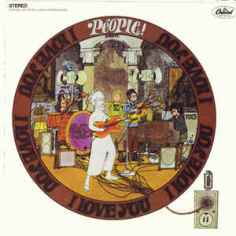 unnoticed upon release, was re-recorded in 1968 by a San Jose-based group called People!, and their version sold a million copies, climbing the U.S. charts to #14 and reaching #1 in Canada and four other countries.
unnoticed upon release, was re-recorded in 1968 by a San Jose-based group called People!, and their version sold a million copies, climbing the U.S. charts to #14 and reaching #1 in Canada and four other countries.
The Zombies, at this point, were a non-entity, but there was still this diamond-in-the-rough album sitting on the shelves. “Odessey and Oracle” (the word “odyssey” was misspelled by cover design artist Terry Quirk, a mistake the band later claimed was intentional) was finally released in England in April 1968 to little fanfare. But Al Kooper heard it, and led the charge for its U.S. release a few months later. While it managed only #95 on the album charts here, it included “Time of the Season,” a prime example of a ‘sleeper hit’ that flopped upon release but gathered steam, and found itself a million-selling #3 hit in the U.S. nine months later.
(How sturdy a song is “Time of the Season”? We need look no further than its inclusion on Dave Matthews Band’s 1997 “Live at Red Rocks” album, where it received a resounding ovation.)
Rolling Stone‘s “500 Greatest Albums of All Time,” published in 2003, ranks “Odessy and Oracle” as #100 on that list, and I wholeheartedly concur with this kind of praise. I 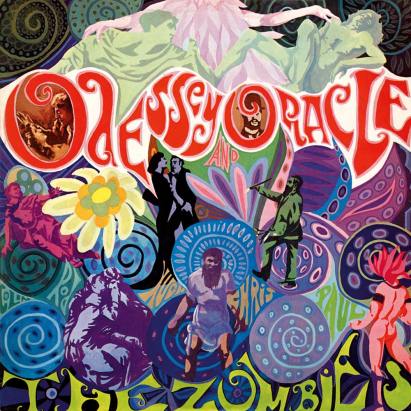 strongly urge you to check out the wealth of stone great tunes here, including “The Butcher’s Tale,” “A Rose for Emily,” “This Will Be Our Year,” “Card of Cell 44,” “Beechwood Park” and “Hung Up on a Dream.”
strongly urge you to check out the wealth of stone great tunes here, including “The Butcher’s Tale,” “A Rose for Emily,” “This Will Be Our Year,” “Card of Cell 44,” “Beechwood Park” and “Hung Up on a Dream.”
Jeff Gold, author of the 2012 book “101 Essential Rock Records: The Golden Age of Vinyl from The Beatles to The Sex Pistols,” positively gushed about the album. “Few albums conceived in the heat of the post-“Sgt. Pepper” passion hold up as well as ‘Odessy and Oracle,’ which balances demanding artistic aspiration with typically tasteful, understated arrangements and performances. In terms of delivering a consistent, seamlessly textured slate of first-rate pop songs, it rightly deserves comparisons to the universally praised Beach Boys LP ‘Pet Sounds.’ Rod Argent, Colin Blunstone and their compatriots were never anything less than one of rock’s most tuneful aggregations. Hugely influential to this day, The Zombies can point with pride to a crowning achievement that New Musical Express labeled ‘British psychedelia with a kaleidoscopic vision that rivals even The Beatles.'”
The legacy of The Zombies lived on into the next decade. By 1970, Argent and White had 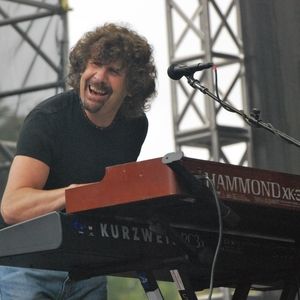 joined forces with guitarist Russ Ballard and future Kinks members Jim Rodford (bass) and Bob Henrit (drums) to form the band Argent. They churned out a half-dozen albums of commendable rock music and garnered some attention, first when Three Dog Night made a hit out of their Ballard-penned song “Liar” in 1970. Most notable, of course, was their 1972 LP “All Together Now,” highlighted by the organ-dominated “Hold Your Head Up,” a #5 monster hit that summer. Keyboard wizard Rick Wakeman has called Argent’s instrumental work on this track “the greatest organ solo ever.” Cover versions of this classic rock standard abound, including those by Steppenwolf, Marc Tanner Band, Uriah Heep and Phish.
joined forces with guitarist Russ Ballard and future Kinks members Jim Rodford (bass) and Bob Henrit (drums) to form the band Argent. They churned out a half-dozen albums of commendable rock music and garnered some attention, first when Three Dog Night made a hit out of their Ballard-penned song “Liar” in 1970. Most notable, of course, was their 1972 LP “All Together Now,” highlighted by the organ-dominated “Hold Your Head Up,” a #5 monster hit that summer. Keyboard wizard Rick Wakeman has called Argent’s instrumental work on this track “the greatest organ solo ever.” Cover versions of this classic rock standard abound, including those by Steppenwolf, Marc Tanner Band, Uriah Heep and Phish.
Meanwhile, Blunstone embarked on a solo career that, while pretty much nonexistent to 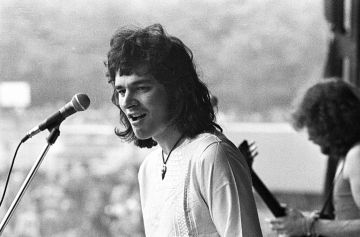 American audiences, saw modest success in the British market, where six LPs made the charts in the Seventies. Blunstone’s warmly powerful voice drew the attention of the visionary producer/musician Alan Parsons, who invited Blunstone to participate on several tracks for The Alan Parsons Project, such as “The Eagle Will Rise Again” and “Dancing on a High Wire.” One of those — “Old and Wise” from the million-selling “Eye in the Sky” album — reached #22 in the U.S in 1982.
American audiences, saw modest success in the British market, where six LPs made the charts in the Seventies. Blunstone’s warmly powerful voice drew the attention of the visionary producer/musician Alan Parsons, who invited Blunstone to participate on several tracks for The Alan Parsons Project, such as “The Eagle Will Rise Again” and “Dancing on a High Wire.” One of those — “Old and Wise” from the million-selling “Eye in the Sky” album — reached #22 in the U.S in 1982.
When the Rock and Roll Hall of Fame was created, and the more famous British Invasion bands were being inducted in the late ’80s and early ’90s, The Zombies seemed destined for the “Whatever became of…” dustbin. Then in the late ’90s, various re-releases and anthologies began appearing, most notably the 120-track “Zombie Heaven” in 1997. This new attention prompted Argent and Blunstone to reunite a few times in the early 2000s for the occasional one-off concert in England, which set the stage for an American tour the next year and, eventually, several new studio LPs (“Breathe Out, Breathe In” in 2011 and “Still Got That Hunger” in 2015). You can tell from checking out the tracks I’ve selected on the attached Spotify playlist that they are a far cry from the filler so often associated with bands who regroup well past their prime.
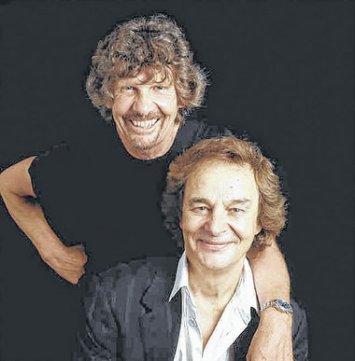 As “Odessey and Oracle” started being mentioned in the same breath with other classic Sixties LPs, Argent and Blunstone have amped up their presence with more appearances and concert CDs and DVDs, culminating in this year’s 50th Anniversary of “Odessey and Oracle”‘s release and, at last, their induction into the Rock Hall.
As “Odessey and Oracle” started being mentioned in the same breath with other classic Sixties LPs, Argent and Blunstone have amped up their presence with more appearances and concert CDs and DVDs, culminating in this year’s 50th Anniversary of “Odessey and Oracle”‘s release and, at last, their induction into the Rock Hall.
Truth be told, although I was as much a fan of The Zombies’ big hits as the next guy, I was puzzled enough by their nomination and selection to spend a little time researching their catalog on Spotify to see if they were truly worthy of the designation. What a delight to find so many worthwhile old tracks featuring Argent’s and White’s fine songs and Blunstone’s ringing vocals. A copy of “Odessey and Oracle” is now in my permanent collection, and I am reminding the greater public, through this blog and elsewhere, that The Zombies are well worth our time and effort.
**************
Relatively small catalogue but definitely worthy of nomination into rnr hall of fame.
LikeLike